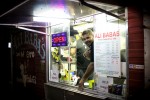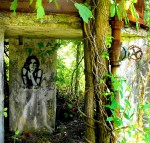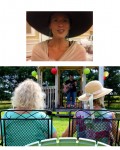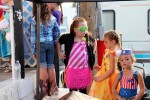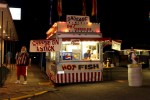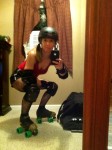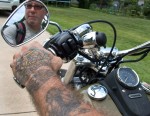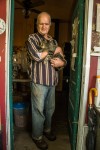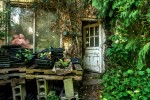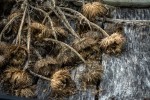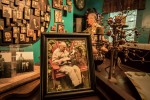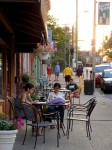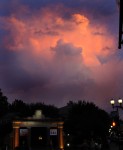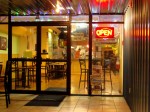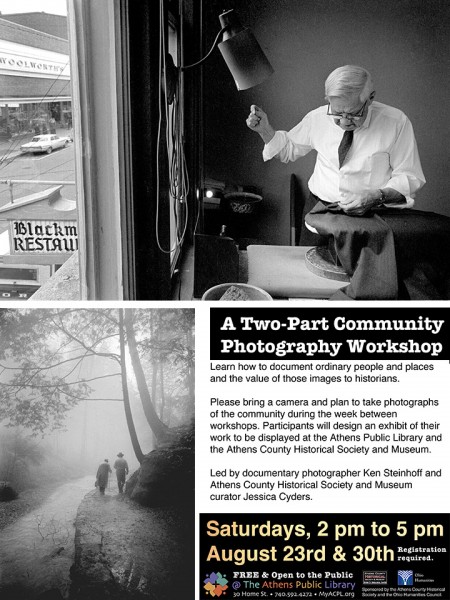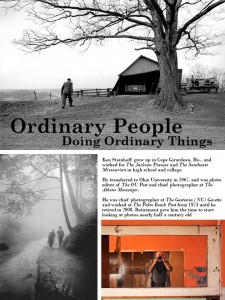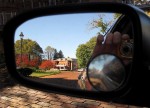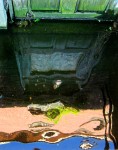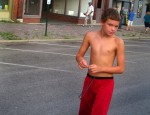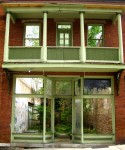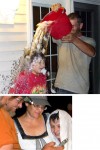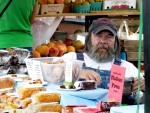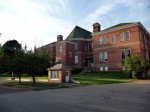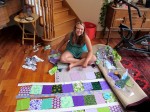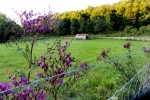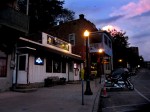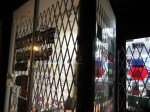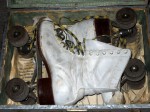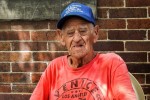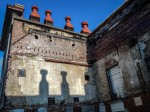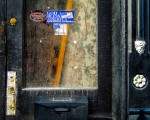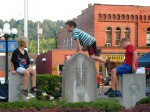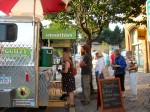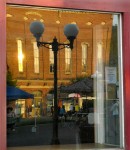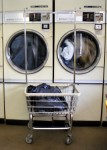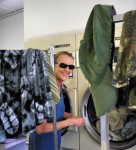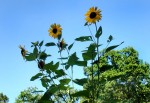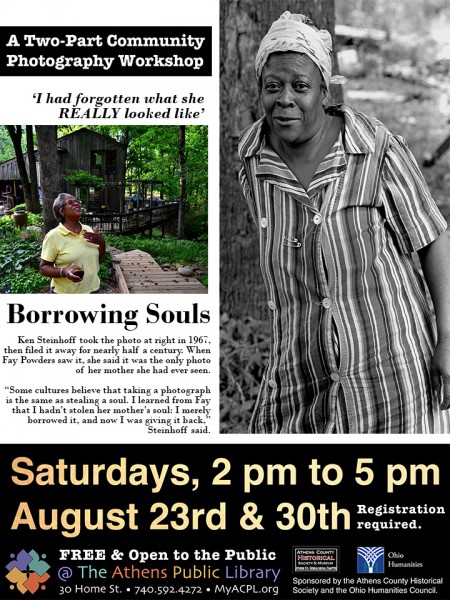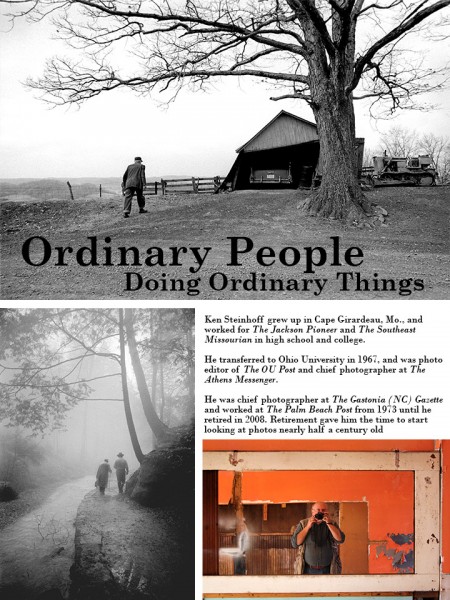You got to see photos produced by half our Picturing the Past Workshop group yesterday. We’ll show the other half today. Curator Jessica reported that Todd Bastin, Athen Public Library coordinator for Art in the Library, said that they’ve received more positive feedback on the exhibit in the past three days than they usually do in a month.
Each photographer’s work will be shown in a gallery. Click on any photo to make it larger, then use your arrow keys to move through the images.
Mary Connolly
I was particularly drawn to Mary Connolly’s work because she’s a runner who says a regular camera would be too heavy, so she shoots everything with her smart phone. It goes to prove that it’s not the camera, it’s the eye that make the picture. She admits that her frequent stops for taking photos throws her running rhythm off, but the results are worth it.
White’s Mill is one of the most photographed landmarks around Athens. Mary, though, nailed it from a different angle than most, and she did it on a snowy day. She photographed Ali Babas’ food truck because “who knows if food trucks will be around in the future?” I like the way she didn’t just shoot a mug shot of the truck: she engaged with the guy INSIDE the truck.
We had some debate about the shot of Radar Hill graffiti. She really liked, but I thought she had stronger photos. We compromised by cropping it tight so it made the image of the woman much more prominent. The man in the alley is her friend waiting for her to get done taking the photo so they could go to the restaurant in the doorway at right.
Robin Barnes
Robin had two photos of women with hats. I really like the composition in the one on top, but it was shot with a cell phone and fell apart when it was enlarged. When it was paired with another hat photo in a layout, it could run smaller and still look good.
I like the way she let the boy’s shoes echo the red in the flag. The fact that he’s holding a phone will make the photo interesting when we all have microchips implanted at birth to carry on that function. Robin had two frames of the little girls lined up for a contest of some kind. I picked this one because I liked the way they are all off in their own little worlds.
Everybody called the guy on the left “Santa Claus.” There was some discussion about cropping the clown barrel on the right out of the photo because it was too dark to read properly. When I got it into Photoshop, though, I could save enough of the tones to make it show up. It was a great pairing of a barrel-chested guy balanced by a barrel.
Sallie Sauber
Sallie was an interesting person in her own right: first off, that’s her in what she titled “Roller Derby Selfie.” She didn’t want to show it to me at first, but I convinced her that the technical limitations were outweighed by the spunky attitude she captured. It was a way better than average selfie. Boy in Leaves wasn’t my first, second or third choice, but I was outvoted by the workshoppers who loved it.
We had some debate about the girl on the bike. She showed up for office hours with a tight shot from behind. It was interesting, but this picture with lots of activity has much better composition and shows the wide variety of ways kids get around on wheels at that age. She, too, made good use of a mirror and reflections.
Steven Koch
Several of the participants said they liked to shoot in black and white or convert their color to B&W in the editing process. I said I really liked black and white – and shot it for most of my career – but that since digital single lens reflexes had come along that let me shoot color under low light levels, I had made the transition to color.
Steven took what, to me, was a curious middle ground: he “desaturated” his really nice color photos, leaving them as something that was neither full of color nor was a pure black and white. A good example would be that he liked the “dull-looking” school bus over the one with vibrant colors. I don’t know that we ever convinced him that the color work was better, but the group voted to go with the color versions of his pictures. [Wife Lila said she liked the way the bus lights showed up in the “duller” shot, but she like the color shot better overall.]
Despite our disagreements over color and B&W, I have to say that Steven was the most technically versatile of the group, with the ability to shoot unusual landscapes, an industrial photo and a nice portrait. That’s quite a range.
Susie Blauser
Susie did a wonderful series of photos showing the Glasshouse Works greenhouses, a Stewart, Ohio, mailorder nursery specializing in rare and exotic plants from all over the world. It was hard to narrow down her take to only four photos. (As someone who lives in South Florida, it feels odd to see tropical plants that grow in our back yard called “exotic.”)
Teresa Faires Winning
When Teresa showed up for the first office hours meeting, she had a photo of an intersection with yellow traffic dividers in it. “We’re going to do something that won’t make Historian Jessica happy – we’re going to crop out all of the stuff that she’s going to want to see in 50 years – but we’re going to end up with a much more striking photo that will probably look more like what caught your eye than what the camera captured.”
Teresa was one of my point ‘n’ shoot people who went out when the sun was going down. Before the sun set, she grabbed a great slice of sidewalk life in town. In addition to preserving a wide variety of clothing of the era, she also managed to get a girl with the ubiquitous white earplugs and the girl in the red dress in the background gabbing on a cellphone.
She was disappointed that she wasn’t able to push the button at the right time to get the lightning flashing in those boiling clouds, but she did manage to capture a spectacular sunset, the gates to the Main green and a row of street lights. She was also astounded at how neat businesses looked at night. It was great to open up a whole new way of seeing for someone.
What’s next?
The group played together so nicely that I hope they get together from time to time to share what new stuff they’ve uncovered.


